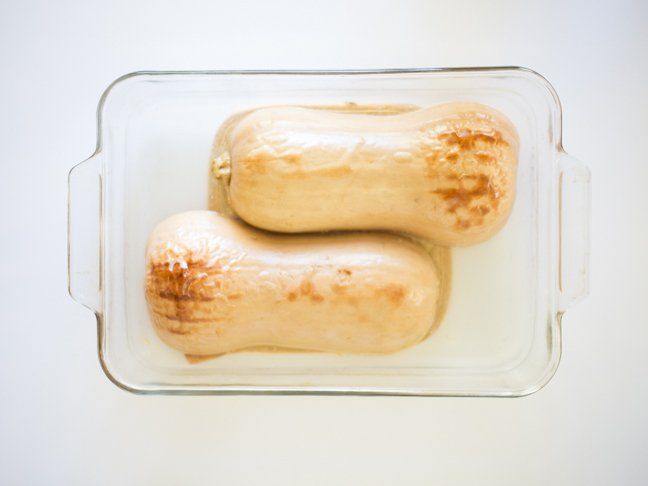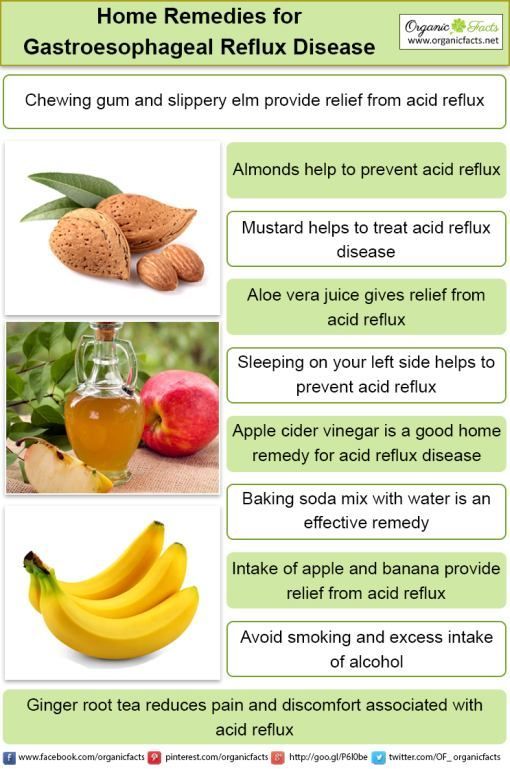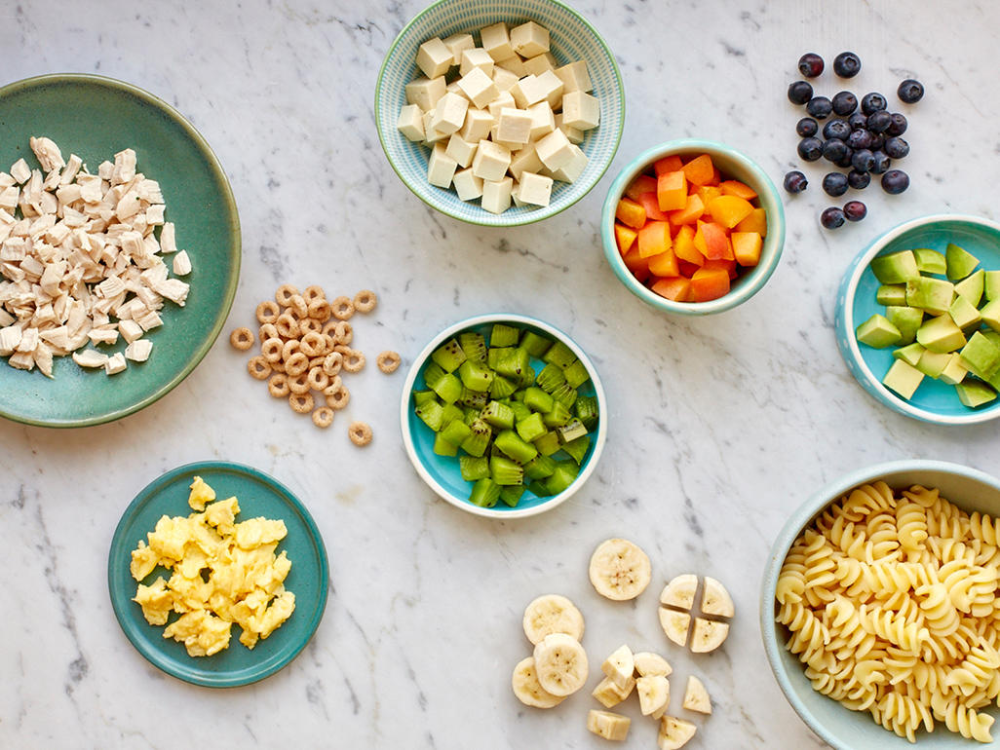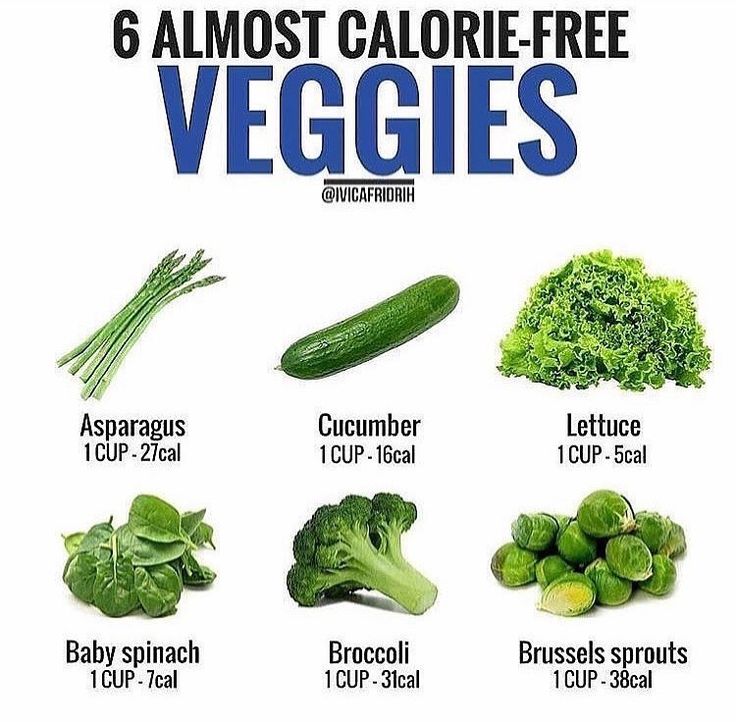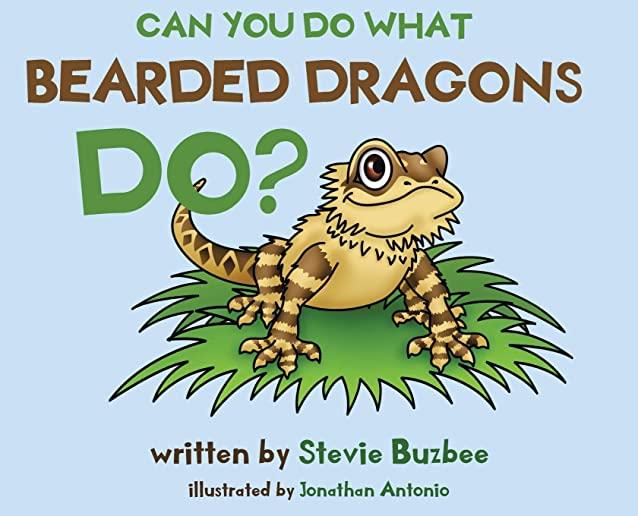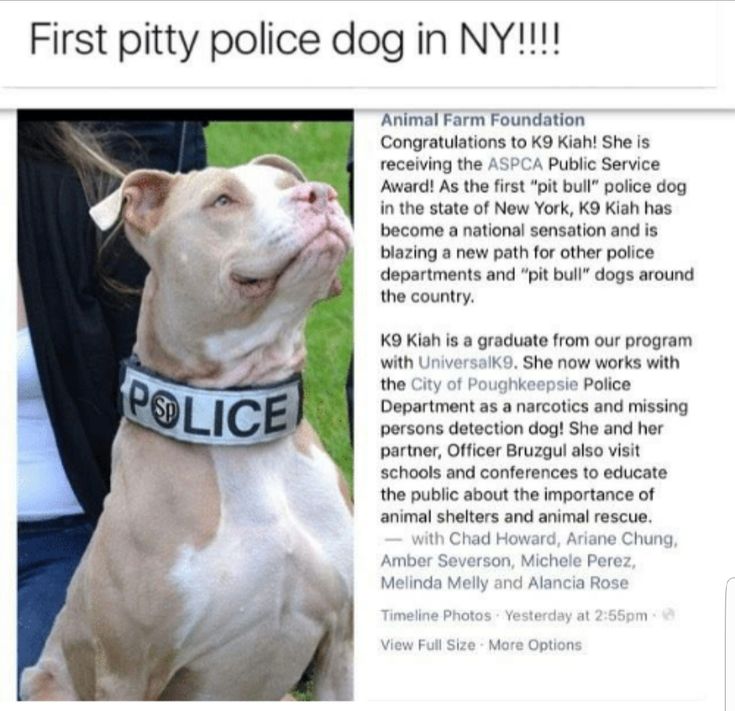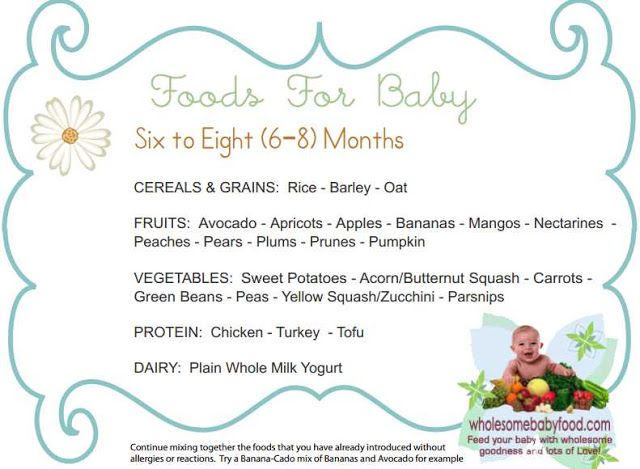Hand feeding lovebird babies
Hand Feeding Baby Lovebirds From Day 1
Hand feeding any baby Lovebird is a commitment, but hand-feeding a baby Lovebird from day 1 is a commitment, plus labor of love! Hatchling babies are very tiny, in addition to being very uncooperative.
The most important thing to consider when feeding a baby this young is timing. Parent Love birds feed their young around the clock for the first 7-10 days, and the hand feeder must also do this. Hatchlings are fed every 2 hours round the clock for the first 5 days. The schedule changes after day 5 and I will discuss this later.
The items needed for a hatchling are the same as for an older baby but there are a few other that are necessary with a day 1.
Most baby Lovebirds are taken from their parents when they are about 14 days old, so digestive bacteria and enzymes have already been established in their systems by their parents. This happens within the first 4-5 days. Hand fed hatchlings do not get this benefit from their parents, so the hand feeder has to add these items. I use Enfalyte instead of plain water because hatchlings tend to dehydrate easily. (I prefer Enfalyte to Pedialyte because it is rice based.) A small syringe gives me much better control when I'm trying to feed a very tiny baby.
Proper feeding temperature is still 106F-108F. Mom feeds at the same temperature, regardless of age. With hatchlings, feeding amount is measured in drops rather than by cc. If the very first feeding is 6-8 drops, that is a lot! This picture shows how full the crop should be for a day 1 lovebird baby. Note that the crop is full and the formula stops at the base of the throat.
Deciding when to feed a day 1 chick for the first time can be tricky. If I do an assisted hatch and choose to feed the baby myself, I wait about 6 hours before I feed. Feeding too soon can kill the chick. If the baby has been with mom and I discover she isn't feeding, enough time has usually passed were it's safe to feed immediately.
For the first couple of feedings, I use just Enfalyte or Pedialyte. This is to make sure that the digestive system is functioning before I feed anything that is harder to digest. As soon as I see that the baby has eliminated 3 separate times, I know I can begin feeding formula. As each formula is different, you will need to follow the mixing instructions on the individual packaging.
Once the baby is 5 days old, I thicken the formula so that I can extend the feedings to roughly every 3 hours. I stay on the 3 hour schedule until the baby is 2 weeks old, giving just one 4 hour break sometime between midnight and 5:00 a.m. to allow the crop to completely empty. Lovebird parents feed round the clock for roughly the first 2 weeks so I mimic their schedule. Even after the first 2 weeks, my first feeding of the day is between 5:00 a.m. and 6:00 a.m. This is also parent schedule. I allow 2 weeks for the digestive bacteria/digestive enzymes to populate the baby's system. Once the baby is 14 days old, I find that lactobacillus and papaya are no longer necessary unless I have a digestive problem with the chicks
Once the baby is 14 days old, I find that lactobacillus and papaya are no longer necessary unless I have a digestive problem with the chicks
Most important supplies: scale made for birds, O-ring syringes, Oxyfresh Cleaning Gel, bottle warmer made for human babies, a brooder that stays between 73-83 F, and Roudybush Handfeeding Formula (consistency of split pea soup to a heavy gravy served between 103-109 F with no dry, solid spots. Nothing should ever be added to the formula, and the formula should have the same thickness consistency from two weeks until weaned.)
2 weeks old:
5 feedings every 4 hours (8:00am, 12:00pm, 4:00pm, 8:00pm, 12:00am.) Many other breeders only feed 4 times every 4 hours the first week, but we do not want the babies crying for food in the middle of the night. Just like human babies, there are small babies (Pixy!) and there are large babies (her brother Jelly Bean!), so the amount of food is going to vary around 3.5-4.5 cc’s. Tamara and I do not say, “Ok baby, you have had 4 ccs, your full!” No, we fill up the babies until their crops resemble a full balloon or when they simply do not want anymore. Feed the babies all at once; competition is your greatest ally. Well-socialization goal: babies should recognize you, have a wonderful feeding response, and have names.
Feed the babies all at once; competition is your greatest ally. Well-socialization goal: babies should recognize you, have a wonderful feeding response, and have names.
3 weeks old:
4 feedings every 4 hours (8:00am, 12:00pm, 4:00pm, 8:00pm.) Just fill those crops until they look and feel like a full balloon. At 3.5 weeks old, the babies will start to chew on their bedding. This is the time to introduce “big bird” food. Fresh, chewy Avicakes are the perfect introduction to solid food. Avicakes are highly nutritious unlike seed or millet. After babies are fed baby food, place a very small crumb into their mouths. This works great as a birdie pacifier also. We never feed them mashed-up or soft foods for weaning. Starting them on what they will eat as adults is best. After they are eating “big bird” food, we introduce small foot toys and toys they can shred. Well-socialization goal: babies try “big bird” food, recognize your voice, and step-up on your palm to be fed.
4 weeks old:
3 feedings every 6 hours (8:00am, 2:00pm, 8:00pm. ) We never drop their feedings to three until we know they are eating the Avicakes on a regular basis. This is the time when we introduce crushed-up Nutri-Berries and a small pellet like Roudybush Crumble. Depending on the size of the baby, they should be receiving around 6 ccs at this point. Once again, feel the crop and if the babies refuse, do not force them to eat. After we feed them baby food, we place them over the solid food bowl. This is the time we introduce a small dish of water also. Well-socialization goal: babies play with toys, eating adult food on a regular basis, and cry out not only for baby food, but for attention also. Some of the older babies at this point have a natural protective instinct of their siblings and territory, so to dilute this trait we lay down on the floor, cuddle, play with them with their toys, and feed them adult food by hand after each feeding. When they have fallen asleep, we place them back into the brooder.
) We never drop their feedings to three until we know they are eating the Avicakes on a regular basis. This is the time when we introduce crushed-up Nutri-Berries and a small pellet like Roudybush Crumble. Depending on the size of the baby, they should be receiving around 6 ccs at this point. Once again, feel the crop and if the babies refuse, do not force them to eat. After we feed them baby food, we place them over the solid food bowl. This is the time we introduce a small dish of water also. Well-socialization goal: babies play with toys, eating adult food on a regular basis, and cry out not only for baby food, but for attention also. Some of the older babies at this point have a natural protective instinct of their siblings and territory, so to dilute this trait we lay down on the floor, cuddle, play with them with their toys, and feed them adult food by hand after each feeding. When they have fallen asleep, we place them back into the brooder.
5 weeks old:
2 feedings every 12 hours (8:00am and 8:00pm or 6:00pm if some of the babies are screaming.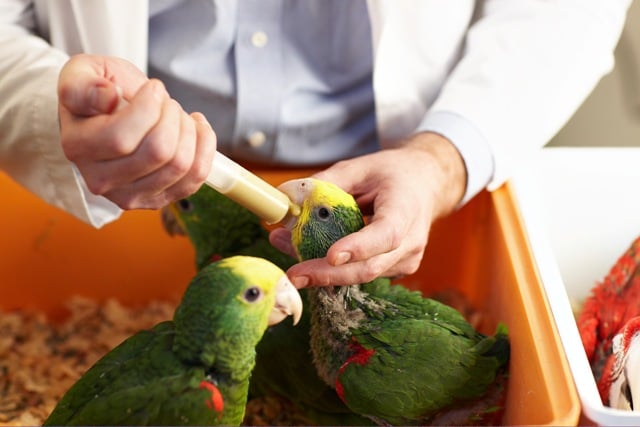 ) At 5.5 weeks of age the babies will start to fly. There first flight is always to us. This is always a true sign that your babies see you more than just the ones who feed you. It is a sign that they love you. This is one of the most awesome milestones for baby’s socialization. This is also the week we introduce seed, because as the babies wean they need that extra burst of energy that the fat in seed has in storage. The fat also fills them up more and helps them strive between feedings. Concerning feedings, some babies at this age take well over 8 ccs of baby food. When we reach 1 feeding per day, they can receive up to as much as 10 ccs.
) At 5.5 weeks of age the babies will start to fly. There first flight is always to us. This is always a true sign that your babies see you more than just the ones who feed you. It is a sign that they love you. This is one of the most awesome milestones for baby’s socialization. This is also the week we introduce seed, because as the babies wean they need that extra burst of energy that the fat in seed has in storage. The fat also fills them up more and helps them strive between feedings. Concerning feedings, some babies at this age take well over 8 ccs of baby food. When we reach 1 feeding per day, they can receive up to as much as 10 ccs.
6 weeks old:
1 feeding per day at 6:00pm or 8:00pm (babies can feed from 7-10 ccs at this point.) If we have a large clutch, 4 or more babies, the prodigies will normally wean during this week.
7 weeks old:
A baby should wean at anytime now. If they do not cry for their evening feeding, then do not give it to them. At 7 weeks, we introduce cooked foods, fruits, sprouts, and veggies. The babies will see the adults eating the food and will follow their lead.
At 7 weeks, we introduce cooked foods, fruits, sprouts, and veggies. The babies will see the adults eating the food and will follow their lead.
They should be fully weaned by 8 weeks.
See Lovebird Growth Picture Days 1 to Days 35
Handfeeding & Socializing | Parrot Parrot
f you haven’t read Part I of Breeding Lovebirds: A Beginner’s Guide, we suggest you go there first for the basics of breeding. This section covers raising lovebirds once the eggs have hatched.
Handfeeding Movies: Due to popular demand I’ve added some short mpg movies showing how to handfeed. Please note that this is not a substitute for being shown how to do this in person. Also note that I have already tested the temperature of the formula when these movies begin!
The First Few Days
The first few days after the eggs begin hatching can be nerve-rattling for beginners. Resist the temptation to check on the babies too often, but do make sure they are being properly fed by the parents. It is your job to make this stressful job as easy on the parents as possible. The male has to eat his food, regurgitate it for the hen, who in turn regurgitates the food for the babies. This involves enormous amounts of energy, and you might notice the male parent getting a little on the thin side. Later on, the male will help feed the babies himself rather than using the female as a go-between of sorts.
The male has to eat his food, regurgitate it for the hen, who in turn regurgitates the food for the babies. This involves enormous amounts of energy, and you might notice the male parent getting a little on the thin side. Later on, the male will help feed the babies himself rather than using the female as a go-between of sorts.
The number one way to ease the stress on the parents is to supply a wide variety of easy-to-digest foods on a regular basis. My parents always get more “meals” than other lovebirds. They need their water replaced more often (you’ll notice it gets dirtier much faster). They’ll prefer softer (hence fresh) foods that cannot be left in the cage for more than a few hours. For people working 9-5 jobs this can be difficult. I suggest giving fresh foods as soon as you get up in the morning, then removing anything that can spoil just before you leave for work. Leave in the cage millet, dried egg food (a powdery yellow food found at most avian supply stores) or Quiko, pellets (Roudybush seems the easiest for them-but they will make soup!), veggies that don’t spoil easily like sunflower sprouts or broccoli florets, and a good seed mix. Then give them fresh food when you arrive home and take it out after an hour or so.
Then give them fresh food when you arrive home and take it out after an hour or so.
Make sure the parents also have cuttlebone and plenty of water. I suggest two bowls of water during this period. They’ll usually make soup out of one right away, but will often leave one unsoiled for a few hours (place one far away from the other food bowls). This helps to avoid bacterial infections due to spoiled food sitting in water all day while you’re at work. It doesn’t always work since some piglets will immediately drop pellets into BOTH bowls of water. I’ve noticed that some parents particularly love what I call “Roudybush Soup.” They’ll drop the pellets in until it makes a thick soup. This can turn into a real primordial stew of death if left unchanged for more than a couple of hours. With those parents I must change the water a minimum of three times a day (usually by the third bowl they’ve moved on to greens, seeds, or other foods they don’t feel need soaking in the water bowl).
You’ll notice the babies will be on their backs for the first week. This is completely normal. Lovebirds always feed their babies on their backs, and if for some reason you are forced to pull lovebird babies that are newly born, you will have to do the same. Feeding Day-1 babies is extremely difficult and time-consuming and should not be attempted by a beginner. If you are forced to do this because the mother is ignoring the babies or attacking them, you should get help from an experienced hand-feeder. You will have to feed these babies every 15 minutes to half an hour if they are only a day old-right through the night. This can test the patience of most anyone. Because this is such a difficult (and usually unnecessary) process, I will not cover it here. Instead, I will discuss the more typical scenario or pulling 10-day-old chicks for hand-feeding.
This is completely normal. Lovebirds always feed their babies on their backs, and if for some reason you are forced to pull lovebird babies that are newly born, you will have to do the same. Feeding Day-1 babies is extremely difficult and time-consuming and should not be attempted by a beginner. If you are forced to do this because the mother is ignoring the babies or attacking them, you should get help from an experienced hand-feeder. You will have to feed these babies every 15 minutes to half an hour if they are only a day old-right through the night. This can test the patience of most anyone. Because this is such a difficult (and usually unnecessary) process, I will not cover it here. Instead, I will discuss the more typical scenario or pulling 10-day-old chicks for hand-feeding.
WHEN TO PULL THE BABIES FOR HAND-FEEDING TO GET THE TAMEST BIRDS
In my experience, the tamest babies are pulled around 10-14 days. I generally pull the whole clutch when the YOUNGEST baby is about 9-10 days old. This generally means the oldest baby is around 16-17 days old. Frankly, I have had difficulty with birds pulled any later than 17 days. If there is a wide variance in hatching times within a single clutch, I’ll pull the oldest chicks before they are 15 days old and wait to pull the younger chicks. I place them in a large “brooder”-which I make by putting a few inches of Carefresh Cage Liner in a plastic reptile container (they are available at most pet stores and have brightly colored lids covered with slits for air). The lovebirds are generally old enough to create warmth by cuddling with each other, and the older chicks have a good amount of feathering at this point. I cover the Carefresh with untreated paper towels, since it’s easy to pull out the dirty towels and put in clean ones every time I feed. Do not leave dirty, soiled liners in the brooder since baby birds are very susceptible to bacterial infections and poops=bacteria. Also, as they get older, curious chicks will eat their own poops.
This generally means the oldest baby is around 16-17 days old. Frankly, I have had difficulty with birds pulled any later than 17 days. If there is a wide variance in hatching times within a single clutch, I’ll pull the oldest chicks before they are 15 days old and wait to pull the younger chicks. I place them in a large “brooder”-which I make by putting a few inches of Carefresh Cage Liner in a plastic reptile container (they are available at most pet stores and have brightly colored lids covered with slits for air). The lovebirds are generally old enough to create warmth by cuddling with each other, and the older chicks have a good amount of feathering at this point. I cover the Carefresh with untreated paper towels, since it’s easy to pull out the dirty towels and put in clean ones every time I feed. Do not leave dirty, soiled liners in the brooder since baby birds are very susceptible to bacterial infections and poops=bacteria. Also, as they get older, curious chicks will eat their own poops. I use the extra-large brooder so they can “grow” into it. One side is for cuddling, one side is where I put foods. I eventually put a perch inside (a flexible rope perch can sit right on the floor of the brooder).
I use the extra-large brooder so they can “grow” into it. One side is for cuddling, one side is where I put foods. I eventually put a perch inside (a flexible rope perch can sit right on the floor of the brooder).
Hand-feeding formula via syringe
The best advice I can give is to be properly trained before attempting hand-feeding. What I did was hand-feed in the store where I bought the bird while an experienced hand-feeder watched. Once I’d done this for a few days, I took the bird home to feed, then I brought the bird back in so they could check his weight every other day. You will be very depressed if you starve your birds to death (not to mention how irresponsible this is), so don’t just try to wing it! Once you’ve properly learned this procedure the guidelines below will help you, but remember, hand-feeding is not an exact science. You will find each bird is very different-you will have to be very careful that a bird is getting enough formula and that no formula is getting in the bird’s lungs (called “aspiration”-often fatal due to bacterial pneumonia resulting). Some birds wean quickly, some take twice as long. If you want healthy birds that aren’t neurotic about food, you’ll learn from them rather than follow a rigid system.
Some birds wean quickly, some take twice as long. If you want healthy birds that aren’t neurotic about food, you’ll learn from them rather than follow a rigid system.
Handfeeding baby lovebird
All of my lovebirds require four to five feedings a day at first. I use Exact Hand-Rearing Formula, which is time-tested by many breeders. I have tried other formulas and have been at times suspicious of a rotten smell they can have. Exact has never failed me-that means, I have never lost a baby hand-fed with Exact formula. That seems like as good an endorsement as you can get. The formula should be between 103 and 105 degrees Fahrenheit. Frankly, some birds like it cooler, some hotter. If you’re getting refusals, check the temperature again-the formula may have cooled down too much. I have enough experience to do the wrist test (it should feel almost too hot for your wrist), but until you have fed dozens of birds, you should get a quality digital thermometer to test the temperature. If it’s too cold lovebirds will balk at being fed formula; if it’s too hot you can kill them by burning the crop. Imagine what it would feel like to have your esophagus burned by hot split pea soup! All it takes is ONE TIME with too hot of formula to critically injure your bird through crop burning.
Imagine what it would feel like to have your esophagus burned by hot split pea soup! All it takes is ONE TIME with too hot of formula to critically injure your bird through crop burning.
Be VERY CAREFUL if you use a microwave oven to heat your formula. Make sure there are not “hot spots” in the formula that could burn the bird’s crop. Stir it thoroughly before testing the temperature.
At first, the formula will be rather thin. Generally, Exact gives pretty good specifications as to ratios between water and powder. Just as a general formula, I find it’s best to start with a pretty thin mixture then progress to a pea-soup texture over the next two weeks. Again, it is experience that teaches you this.
I use an O-ring syringe. It seems to be the easiest to plunge at the right rate. You don’t want to plunge so quickly that you choke the bird, and you don’t want to plunge so slowly that you frustrate the bird (and he swallows a lot of air). I don’t force the formula, rather I let the baby set the rhythmn. They “pump” as they eat and I slowly follow this pumping by pushing down on the plunger of the syringe. If the bird stops, I wait until it is ready for a bit more (generally these pauses only last a second or so). This is something you get better at the more you handfeed. It really becomes more of an art than a science, with the bird setting the tempo and me following.
They “pump” as they eat and I slowly follow this pumping by pushing down on the plunger of the syringe. If the bird stops, I wait until it is ready for a bit more (generally these pauses only last a second or so). This is something you get better at the more you handfeed. It really becomes more of an art than a science, with the bird setting the tempo and me following.
Clean your syringes thoroughly between feedings. I use Oxyfresh, which is nontoxic but very effective. Normal household bleach diluted in water is a good disinfectant, but be sure to rinse the syringe and plunge clean water through it until it is completely clean. Bleach tends to break down the rubber in the syringe more quickly than Oxyfresh.
Getting a tad more...
Sometimes when I’m done I’ll offer the group a tad more. If they want a bit more they will run to the syringe and take a bit in their mouths.
As soon as possible. I can’t emphasize this enough. The best eaters are the ones exposed to foods the earliest. I’m talking 21 days. I put millet, sunflower sprouts, and crumbled Roudybush pellets at first. It usually takes a few days for them to catch on. Then I change the types of food I give EVERY SINGLE DAY. This helps eliminate the most common problem with lovebirds: \food phobias. Yes, food phobias. Have you ever seen a lovebird react to a food it hasn’t seen before? It’s like you’ve just thrown a snake in the cage.
I’m talking 21 days. I put millet, sunflower sprouts, and crumbled Roudybush pellets at first. It usually takes a few days for them to catch on. Then I change the types of food I give EVERY SINGLE DAY. This helps eliminate the most common problem with lovebirds: \food phobias. Yes, food phobias. Have you ever seen a lovebird react to a food it hasn’t seen before? It’s like you’ve just thrown a snake in the cage.
Introduce lots of variety early on so you don't have picky eaters
Here’s a sample menu for 4-week-old lovebirds:
Monday: Cheerios, sunflower sprouts, pea shoots, millet
Tuesday: Seed mix, Roudybush pellets, cooked corn niblets and carrots (chopped to bite size)
Wednesday: Wheatgrass, millet, Exact pellets
Thursday: Cooked quinoa or brown rice with sprouted beans and seeds, Cheerios, pellets
Friday: Cooked sweet potato (mashed) with corn niblets mixed in, seed mix, sunflower sprouts
You get the picture. This way, food is not something strange and scary-it’s something to peak their curiousity.
N.B. The reason I give two types of pellets is this: some people can’t find Roudybush or think it’s too expensive. If the birds have had other pellets, they’ll be easier to feed. Exact pellets are readily available and relatively inexpensive, so I feed them to all my babies. I am a firm believer that variety in diet is essential. I do not rely on pellets as a sole source of nutrition and I believe they should constitute no more than 25% of the diet. The most important thing to teach young lovebirds is that fresh foods are safe and delicious.
WEANING: ABUNDANCE WEANING IS BEST
The concept of abundance weaning has recently gained popularity. While it can be difficult to track the lives of birds once a breeder sells them, many personal anecdotes from breeders give credence to the idea that abundance weaning leads to more secure, less neurotic birds who will eat a wider variety of foods.
Abundance weaning simply means you let the bird decide when it’s done being handfed. You never “starve” the bird to get it to eat. In fact, birds are more likely to pick at new foods if they have had their appetite stimulated by a “shot” of formula.
You never “starve” the bird to get it to eat. In fact, birds are more likely to pick at new foods if they have had their appetite stimulated by a “shot” of formula.
I find that my lovebirds start to get a little annoyed by the syringe at 5 or 6 weeks of age. They still want the food, but don’t want to be totally “filled” with formula. They balk if you try to give them the usual size feeding. Don’t force the issue. Let them have their taste, then supply them with as wide a variety of foods as possible.
Lovebirds do tend to thin down quite a bit during the weaning process. Pay careful attention to this as you don’t want the bird to get too thin. I find lovebirds are just not big piggies when they wean the way budgies are. Budgies will stuff themselves with millet until their crops are so big they can barely stand up! Lovebirds tend to eat a little all day long rather than pig out. (The exception is during parenting, when lovebird pairs with babies will tend to have very full crops all the time to be prepared to regurgitate food for screaming babies. )
)
I THINK MY BIRD IS WEANED!
Your bird is weaned when it no longer begs/cries for foods and appears to be eating normally. There is nothing wrong with offering a little formula just to be sure, but if your bird has been going four days on just a tad of formula, you can be pretty sure they are weaned. It’s always better to go a little long with handfeeding than to wean too quickly.
DON’T SELL THE BIRD RIGHT AWAY
It is better to wait 3 or 4 more days to be sure the bird is 100% weaned. You’ll know pretty quickly if there is a change in the bird’s appearance or vitality. A new owner might not notice the subtle signs that you would notice. These few extra days can also prevent “regression,” a phenomenon that occurs generally with birds weaned a bit too quickly (or just insecure birds looking for mama). This is when the bird wants to handfeed again after being off formula for a few days, and can occur when they go through the stress of being in a strange, new home. A good way to make sure the bird is fine is to spoon feed it the last few days of handfeeding, then give the new owner a little formula and show them how to give the baby a little bit on a spoon. This will reassure the baby, and the new owner won’t have to use a syringe (which is very risky for anyone who is not experienced). Sometimes just this “taste” of formula is enough to calm down a baby who misses his primary caregiver (i.e., YOU) and takes care of the problem of regression. Do not use this as a way to sell unweaned babies–it is only an extra measure to make sure the transition to the new home goes smoothly.
A good way to make sure the bird is fine is to spoon feed it the last few days of handfeeding, then give the new owner a little formula and show them how to give the baby a little bit on a spoon. This will reassure the baby, and the new owner won’t have to use a syringe (which is very risky for anyone who is not experienced). Sometimes just this “taste” of formula is enough to calm down a baby who misses his primary caregiver (i.e., YOU) and takes care of the problem of regression. Do not use this as a way to sell unweaned babies–it is only an extra measure to make sure the transition to the new home goes smoothly.
Socializing is an important part of hand-feeding. If you just fill the baby with food and drop him back in the brooder you are not socializing him. Handle the bird between feedings because you don’t want to handle a bird whose crop is stuffed full of formula because you want to avoid regurgitation. The more often you just reach in and pick up the babies, the more comfortable they will be with hands. Hand-fed does not mean a nicely tamed baby.
Hand-fed does not mean a nicely tamed baby.
Once great method is to take out the babies when you watch TV. I like to put a towel on my lap and let them cuddle in there – this also keeps baby poop off my clothes and the couch! I reach in every few minutes and handle them – they love this and it becomes a bit of a game with babies peeking out and squealing when you reach in. I have found babies handled like this every day are unbelievably tame.
You should also be careful if you wean the bird but don’t have a buyer right away – you still need to handle the baby as much as possible as they can “go wild” very easily – this is why so many people end up disappointed when they get a supposedly hand fed baby from a pet store and it draws blood 🙁
Be sure to read my article: “I Thought This Bird Was Hand Fed”
***As I stated above, you should NOT link to the mpg movies directly. If you want to link to them, you must give the link to this main page ending with .htm, NOT directly to the movies.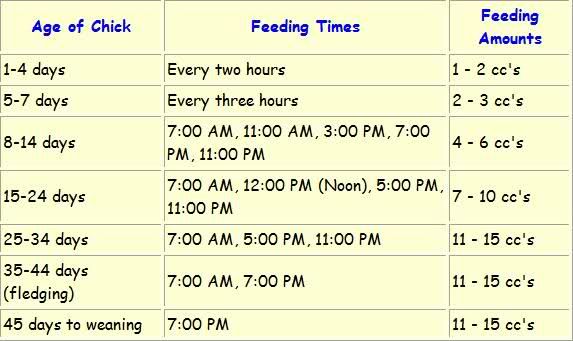 Linking directly to the movies is not only a violation of copyright law, it is considered theft of bandwidth. We take these types of infractions seriously and have pursued legal remedies in all cases of copyright infringement/theft of bandwidth. More on our copyright found here.***
Linking directly to the movies is not only a violation of copyright law, it is considered theft of bandwidth. We take these types of infractions seriously and have pursued legal remedies in all cases of copyright infringement/theft of bandwidth. More on our copyright found here.***
Go back to Part I of Breeding Lovebirds: A Beginner’s Guide
Send us an e-mail if you have any questions
PLEASE DO NOT ATTEMPT to handfeed a baby bird if you have little or no experience. Horrible deaths can result in which the baby really suffers, like crop burns, slow starvation, pneumonia from aspirating formula into the lungs….don’t put a living creature through this torture.
IT IS A MYTH that you must handfeed a baby bird yourself for it to bond to you! IT IS A MYTH!!!
A tame, just-weaned baby will bond VERY QUICKLY to its new owner. They are flock creatures and will quickly adapt to their new flock: You!
Discuss Lovebirds at my Parrot Discussion Forum
Lovebird chicks: features of caring for babies
Read in this article
Lovebirds are called little parrots who choose their soul mate once and for life. These are quite unpretentious birds in keeping, but if adults or lovebird chicks receive the wrong care, this can cause their illness and even death.
These are quite unpretentious birds in keeping, but if adults or lovebird chicks receive the wrong care, this can cause their illness and even death.
If you are serious about breeding lovebirds, you should first of all take care of having a spacious cage so that the birds can fly. The ideal place for nesting is the top of the bird house. The best periods for incubation and breeding are May and September. The diet of future parents should be complete, that is, in addition to the main grain feed, it should include a large amount of various greens. nine0003
Complete mutual understanding and harmony should reign in a couple. If this is not observed, then the partners should be separated for a while. Having missed each other, they will begin to get along. But if this does not help improve relations, then one of the birds will have to be replaced. The optimal age of candidates for parents is from 1 to 4 years. Crossbreeding of close relatives is unacceptable!
Nesting parameters are as follows: height - about 22 cm, length and width - 17 cm each, diameter of the notch - 6 cm. Ideally, the bottom of the nest should have a recess, so that the eggs will not roll out, and the lid should be made folding for convenience cleaning. Sawdust is poured into the nest, but you can give the female the opportunity to independently arrange a place for incubation by placing a bunch of the thinnest branches of deciduous trees in the cage. Place a perch under the nest. nine0003
Ideally, the bottom of the nest should have a recess, so that the eggs will not roll out, and the lid should be made folding for convenience cleaning. Sawdust is poured into the nest, but you can give the female the opportunity to independently arrange a place for incubation by placing a bunch of the thinnest branches of deciduous trees in the cage. Place a perch under the nest. nine0003
Incubation of eggs is a very responsible period
Having laid 4 to 6 white eggs in the nest, the female parrot incubates them for about 3 weeks (plus or minus 2 days depending on air parameters). The bird not only warms the future offspring with its body, but also turns the eggs twice a day and moves them around the nest (from the middle to the edge and vice versa), which ensures their uniform heating. During this period, the female rarely leaves the nest, and even then only out of urgent need (to eat and stretch). nine0003
Owners of lovebirds should not disturb the birds, let alone touch the eggs. Feeding pets, cleaning the cage and monitoring the nesting should be done very carefully and silently. Sudden changes in air temperature are unacceptable, the optimal mode should be 18-20 ° C. Even more scrupulous should be treated to comply with the norms of humidity. Moisture deficiency is fraught with the occurrence of pathologies of the embryos, and in extreme cases, their fading, especially in the first week of incubation. And excessively high humidity poses a threat to the viability of the embryo, mainly at the 3rd week of development. Excess moisture in the egg leads to the fact that the embryo swallows it more than required, due to which the liquid blocks the airways. As a result of this, lovebird chicks often die. Optimal for the full formation of the embryo is considered to be air humidity in the range of 50-60%. nine0003
Feeding pets, cleaning the cage and monitoring the nesting should be done very carefully and silently. Sudden changes in air temperature are unacceptable, the optimal mode should be 18-20 ° C. Even more scrupulous should be treated to comply with the norms of humidity. Moisture deficiency is fraught with the occurrence of pathologies of the embryos, and in extreme cases, their fading, especially in the first week of incubation. And excessively high humidity poses a threat to the viability of the embryo, mainly at the 3rd week of development. Excess moisture in the egg leads to the fact that the embryo swallows it more than required, due to which the liquid blocks the airways. As a result of this, lovebird chicks often die. Optimal for the full formation of the embryo is considered to be air humidity in the range of 50-60%. nine0003
The owners will also have to monitor good air circulation in the nest, since insufficient oxygen, excess carbon dioxide and the presence of toxic gases in its composition can also adversely affect the development of the chick.
7 days after the female sits on the nest, it will already be possible to check whether the eggs are fertilized or not. If everything is in order, then the egg has a matte surface that has a grayish-white tint. If the result is negative, the shell is shiny and yellowish in color (evenly or in spots). Bringing an unfertilized egg to a light source, you can see the dark branched veins. With a large number of eggs, “blank” specimens can be removed, and with a small number, it is better to leave them all. nine0003
It occasionally happens that there is not a single fertilized egg in the nest. No need to rush to throw them away right away. It is better to give the female the opportunity to sit out the prescribed three weeks so that she does not lose her rhythm. If possible, "empty" eggs should be replaced with several full-fledged specimens from the nest of another pair of lovebirds. The "stepmother" will not resist her new role, she simply will not notice the change. Since this type of parrot belongs to flocking birds, ideally several females should be planted on the nests at the same time, while they should be in plain sight of each other - in cages located next door. nine0003
nine0003
Feeding lovebird chicks
The hatched chicks are completely helpless. Their body is almost naked with a small amount of fluff, eyes and ear canals are closed. A few hours after birth, the female begins to feed them with goiter milk, and after a few days she transfers the cubs to incompletely digested food. The feathered father feeds his "half" from his beak, and a little later he takes on part of the responsibility for feeding offspring. Owners who do not know how to care for lovebird chicks at this stage should pay more attention to their feeding and nest hygiene. Finely chopped boiled chicken egg, millet porridge (it is important that the grains are whole, not overcooked), germinated oats, wheat and millet should be added to bird food. nine0003
If, for unknown reasons, the female does not take care of the babies, then they should be moved to the nest with another female. The "careless mother" is transferred to the abode of chicks that have reached 5 days of age.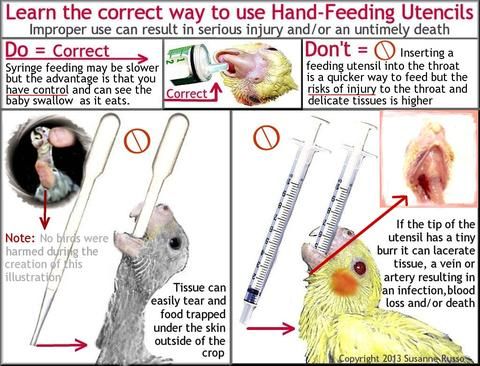 They, making a sonorous and persistent squeak, will be able to awaken the maternal instinct in the bird. The feeding period for small parrots is about 50 days.
They, making a sonorous and persistent squeak, will be able to awaken the maternal instinct in the bird. The feeding period for small parrots is about 50 days.
By the tenth day, the eyes of the chicks are already fully open, and by the age of one month, the thin fluff is replaced by a full-fledged "adult" plumage. On about the 38th day, young parrots leave the nest, but for about 15 more days they receive food from their parents, as they are still learning to find food and peck. nine0003
Those who plan to breed these birds should take into account that in captivity they may not be able to reproduce, or the parental instinct of the couple will not be sufficiently pronounced.
If the lovebird chicks hatch in large numbers, they will quickly fill the nest with waste products. Therefore, you should take care in advance about the availability of a spare nest, so that if necessary, replace it with a dirty one, which should immediately be subjected to cleaning, disinfection and high-quality drying. In the absence of a spare nest, the existing one is cleaned without the use of water, and disinfection is carried out by firing over an open flame. After that, the abode of the chicks is filled with fresh sawdust. If there are few parrots, then it is better to wait with the processing before they leave the nest. nine0003
In the absence of a spare nest, the existing one is cleaned without the use of water, and disinfection is carried out by firing over an open flame. After that, the abode of the chicks is filled with fresh sawdust. If there are few parrots, then it is better to wait with the processing before they leave the nest. nine0003
When the chicks gain strength and become completely independent, they are separated from their parents, placed in another cage. This occurs 15-20 days after departure from the nest. From now on, young lovebirds are cared for as adults.
How to feed a lovebird at home
Contents
- What should lovebird parrots eat? nine0046 What fruits are needed for lovebirds
- What vitamins are needed for lovebird parrots
- Feeding rules for lovebird chicks
Lovebirds are funny, charming and intelligent birds. Feather lovers or just people who want to get a pet that is not too demanding often opt for these bright, melodious creatures. They are quite simple to maintain, although in order for the pet to feel good and live a long life, it is important to know what to feed the lovebirds at home. nine0003
Feather lovers or just people who want to get a pet that is not too demanding often opt for these bright, melodious creatures. They are quite simple to maintain, although in order for the pet to feel good and live a long life, it is important to know what to feed the lovebirds at home. nine0003
What should lovebirds eat? The natural diet is supplemented with fresh fruits, which grow in abundance on trees, as well as small worms and insects. The owner must take into account not only what lovebirds usually eat, but also observe the proportions, monitor the freshness of the food offered.
There are two approaches: buy ready-made sets or make your own daily menu. There are many selections in pet stores for different breeds of birds, including the specific diet of the lovebird. It must be understood that any ready-made mixtures are made on the basis of the same grain, which can be purchased separately, sometimes saving a significant amount of money on this, and at the same time make sure of the quality of the product. Required base includes:
Required base includes:
- Oats are one of the most useful and easily digestible cereal crops. Birds like it due to the fact that the grains are relatively soft, they are easy to peck and swallow. Oats are especially rich in starch, the main source of energy balance, as well as phosphorus, beneficial amino acids and sugars. Remember that ready-made cereals such as "Hercules" are not suitable for the proper nutrition of lovebirds, you need to buy unprocessed.
- Millet - if you buy ready-made food for parrots, then this grain will become the basis. It's not so much the low cost, but the exceptional health benefits of the bird. Millet contains the main nutrients and amino acids, without which the lovebird can get sick and even die. If you are going to prepare a menu for birds with your own hands, include several types of this culture - yellow, red, white. nine0047
- Millet is the same millet, but richer in protein due to the removal of the "husk", that is, the shell.
 To make it more pleasant and comfortable for the lovebird to eat it, you need to boil it a little, but so that the “porridge” remains relatively hard. It is recommended to make porridge from raw carrots with this cereal.
To make it more pleasant and comfortable for the lovebird to eat it, you need to boil it a little, but so that the “porridge” remains relatively hard. It is recommended to make porridge from raw carrots with this cereal. - Corn - There is often a dispute among bird lovers about whether it is possible to give corn to lovebirds. The correct answer is: you can, but not in raw form. Without heat treatment, the grains are too hard, the parrot will not be able to or simply “too lazy” to peck them. It is advisable to boil a young cob a little before offering it to a feathered pet. The culture contains useful carotene, vitamin K.
- Wheat and barley are cereals that are rich in protein but require special care. They must be germinated before offering to the lovebird. For cooking, you need to rinse, remove spoiled grains, place in cold water and wait until sprouts appear. For this dish, any feathered one will say a big “thank you”.
Cereals will always be the basis for feeding parrots. Buy ready-made food or make it yourself - at the mercy of the owner. The most important thing is to monitor the quality, check that the product is fresh, there is no smell of mustiness, mold. If you buy ready-made food, you can take and try a couple of grains “by the tooth” - they should feel fresh, without bitterness and unpleasant flavors. nine0003
Buy ready-made food or make it yourself - at the mercy of the owner. The most important thing is to monitor the quality, check that the product is fresh, there is no smell of mustiness, mold. If you buy ready-made food, you can take and try a couple of grains “by the tooth” - they should feel fresh, without bitterness and unpleasant flavors. nine0003
All birds have a fast metabolism and eat almost constantly, so food should always be poured into the feeder. It is strictly forbidden for lovebirds to starve, but overfeeding is also harmful, from excess food, and especially fat in the diet, they can get sick and even die. It is also important to monitor the freshness of food, whether it is a ready-made or self-composed mixture.
What fruits are needed for lovebirds
Tropical parrots should not be kept on grain or prepared food alone. In nature, they eat a lot of sweet fruits that grow in the humid African forests. Birds absorb fructose well, they need it to quickly obtain energy, which small creatures spend very actively on flying, singing and other activities.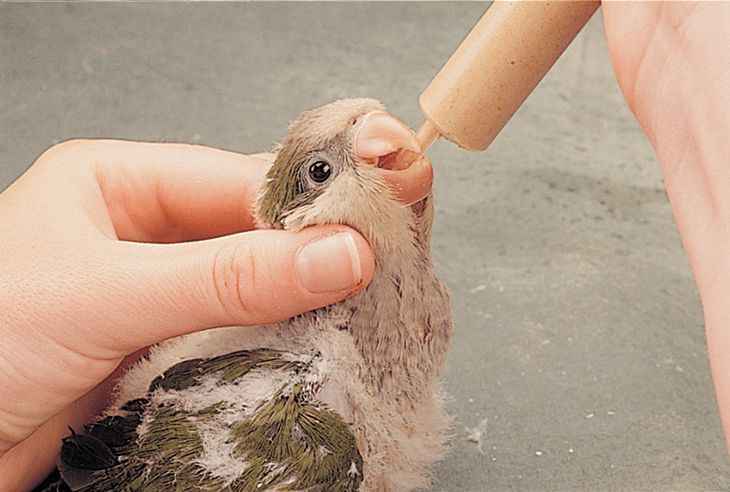 Among the most popular fruits for lovebirds:
Among the most popular fruits for lovebirds:
- Citrus fruits are from the same place as the parrots themselves, so they are a natural part of the diet. They like sour lemons less, so it is advisable to sprinkle with sugar.
- Apples and pears - sweet varieties like parrots. This is one of the best options for how you can always feed a lovebird parrot in addition to food, so that the monotonous diet does not become boring. Fruits will always be perceived as a delicacy, and you can buy them even in winter. nine0046 Watermelons and melons - it is not necessary to peel off the crust, the bird will “sort it out” itself and will peck and “nibble” the crust as much as possible, having eaten all the pulp.
- Cucumbers are a delicacy and a source of additional vitamins, but you can give them only in season so that the content of nitrates and other harmful substances in the vegetable is not exceeded.
- Dill and sprouted onion - rich in vitamin C.

Even if you feed your pet with good store-bought formulas, don't give up on the fruit base. It's delicious, plus an added vitamin benefit. nine0003
What vitamins are needed for lovebirds
It often happens that when feeding at home, birds suffer from vitamin deficiency associated with insufficiently nutritious food. The main manifestations are dull coloration, molting or plucking of their own feathers. The bird may look sick. It is quite difficult to correct the situation, but it is easy to prevent if you know exactly what vitamins are needed for a lovebird:
- Protein - under natural conditions, birds eat worms and insects. Can be replaced with cottage cheese mixed with eggshells. nine0047
- Fats - found in nuts. For proper feeding of any lovebird parrot, walnuts and sunflower seeds are best suited.
- Chicken egg - boiled and crushed together with the shell.
In addition, you can purchase ready-made vitamin complexes. They are sold in many pet stores and are designed for specific breeds of birds.
They are sold in many pet stores and are designed for specific breeds of birds.
Feeding Rules for Lovebird Chicks
Lovebirds are notable for the fact that they are often kept as a pair of opposite sexes. So, the appearance of babies can not be avoided. The female is quite capable of coping with "upbringing", however, babies still need a special diet with the addition of the following components:
- millet porridge - it can be boiled in milk, it should be soft;
- semolina with apple, also boiled;
- be sure to add a drop of fish oil and a pinch of sugar per serving; nine0047
- fledged egg shells, cottage cheese are useful for chicks.
The best way to feed little lovebird chicks is, of course, natural: just add more protein and food to the mother parrot, and she will make sure that the babies are full. However, there are times when you need to mess with the fosterlings of a lovebird parrot - small birds that were left unattended by their parents, then a person has to take care of the winged "children" on himself.

